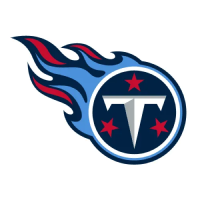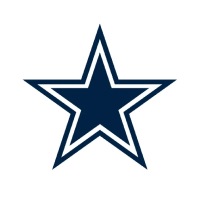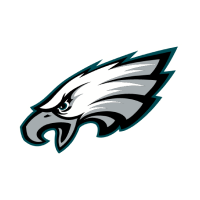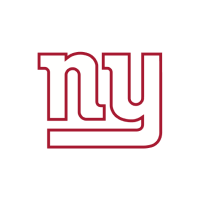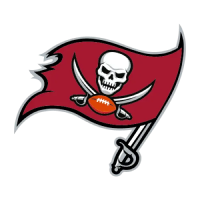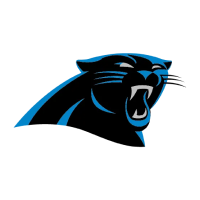Trevor Lawrence. Justin Fields. Zach Wilson. Trey Lance. It is a good year to need a quarterback, folks.
The majority of the league has officially turned its attention to the 2021 draft class and its stock of talented quarterbacks, as the playoffs are underway for the teams with good passers, and the teams without them are jockeying for position at the top of the draft order. Lawrence, Fields, Wilson, and Lance are the prizes for their efforts.
It may feel like four quarterbacks in the first round is a reasonable expectation, given the focus on quarterbacking in today’s NFL—at least four quarterbacks have been drafted in the first round of five of the last 10 classes, including five quarterbacks in 2018. Remember that under the 2010 CBA which implemented the rookie wage scale, starting quarterbacks on rookie contracts were the biggest competitive advantage in the league, and securing that fifth-year option was just another season of cost-controlled quarterback play. That’s why the Ravens traded up in 2018 to make Lamar Jackson the fifth quarterback selected.
Before 2011, it was far more rare. Only in three of the 40 drafts since the NFL/AFL merger were at least four quarterbacks selected in Round 1, with the record of six passers still belonging to the 1983 draft: John Elway at No. 1 overall, Todd Blackledge at No. 7 overall, Jim Kelly at No. 14 overall, Todd Eason at No. 15 overall, Ken O’Brien at No. 24 overall, and an unknown passer named Dan Marino at No. 27.
What’s interesting about the 2021 class isn’t the four quarterbacks in the first round, however—it’s how high they just might go. In Joe Marino’s most recent mock draft for The Draft Network, he had the four quarterbacks as the first four players off the board. The only time three quarterbacks have gone in consecutive picks at the top of the draft was in 1999: Tim Couch, Donovan McNabb, and Akili Smith. Four has never happened.
It feels possible now because of the array of quarterback needs at the top of the draft. The Jaguars at No. 1 overall certainly need a quarterback; behind them, the Jets (2), Eagles (6), and Broncos (9) all may not have their 2021 starter on the roster; and the Falcons (4), Lions (7), and Panthers (8) may not have their 2022 starting quarterbacks on the roster. Throw in longshot trade-up candidates like the 49ers (12) and the Patriots (15), and the wild card Dolphins at No. 3, and you have yourself a lot of teams who will take a hard look at the quarterback class.
Quarterback needs are always the most abundant in January. New general manager hires allow new roster perspective and trade rumors—see Matthew Stafford in Detroit—that may never come to fruition, and disappointing seasons create expectations for quarterback changes that don’t reflect the obstinate faith of coaches in their middling quarterbacks. As the free agent market turns over and teams begin to throw their weight behind their incumbent starters—as GM Chris Grier did today for Tua Tagovailoa, for whatever that’s worth—the field will begin to thin.
But even as our scope focuses, there are too many teams at the top with a combination of premium picks and inflexible QB situations—Jacksonville, New York, Atlanta, Philadelphia—to ignore. Changes in the rookie wage scale under the new CBA lessen, but do not eliminate the value of the rookie-contract quarterback; and smarter coaching has led to more productive rookie seasons for early-drafted passers. A young quarterback is still franchise-changing in a way no other player, coach, or contract is. And with that value, we should expect quarterback classes to continue to become top-heavy. Jordan Love likely wasn’t a first-round pick five or 10 years ago, but as teams come to appreciate the value of young quarterbacks, his draft stock increased.
In this draft class particularly, the value is at the top. The three top quarterbacks—Trevor Lawrence, Justin Fields, and Zach Wilson—are all pro-ready under most evaluations, and the fourth, North Dakota State’s Trey Lance, lacks experience and top-tier competition, but plays with a ton of polish for such a young passer. This class is unlike even 2020 or even 2018, which saw big-armed projects like Justin Herbert and Josh Allen go in the top 10. It’s ready to churn out impact starters in Week 1.
Of course, the same is true of quarterback needs as is true of quarterback evaluations outright—in January, many of these passers look flawless until they’re held to the rigors of film evaluation and the pre-draft cycle. Their real scrutiny comes over the next few months, but they have the film to hold up.
As such, four quarterbacks in the top four may be a longshot—but four quarterbacks in the top 10 is well within reach. It’s only ever happened once before—in 2018—and I’d argue the Big 4 in this class present a stronger set of quarterback prospects than the four that went in the top 10 in 2018: Baker Mayfield, Josh Rosen, Sam Darnold, and Allen. It may not be record-setting, then, but this QB class is as strong as they come and we should expect to see that reflected in the draft capital spent on them in April.
Filed In
Related Articles
NFL Draft
Arik Gilbert Doesn’t Need Big Workload To Be A Top NFL Draft Pick
- Aug 22, 2022
NFL Draft
2023 NFL Mock Draft: Marino 1.0
- Aug 22, 2022
Written By









